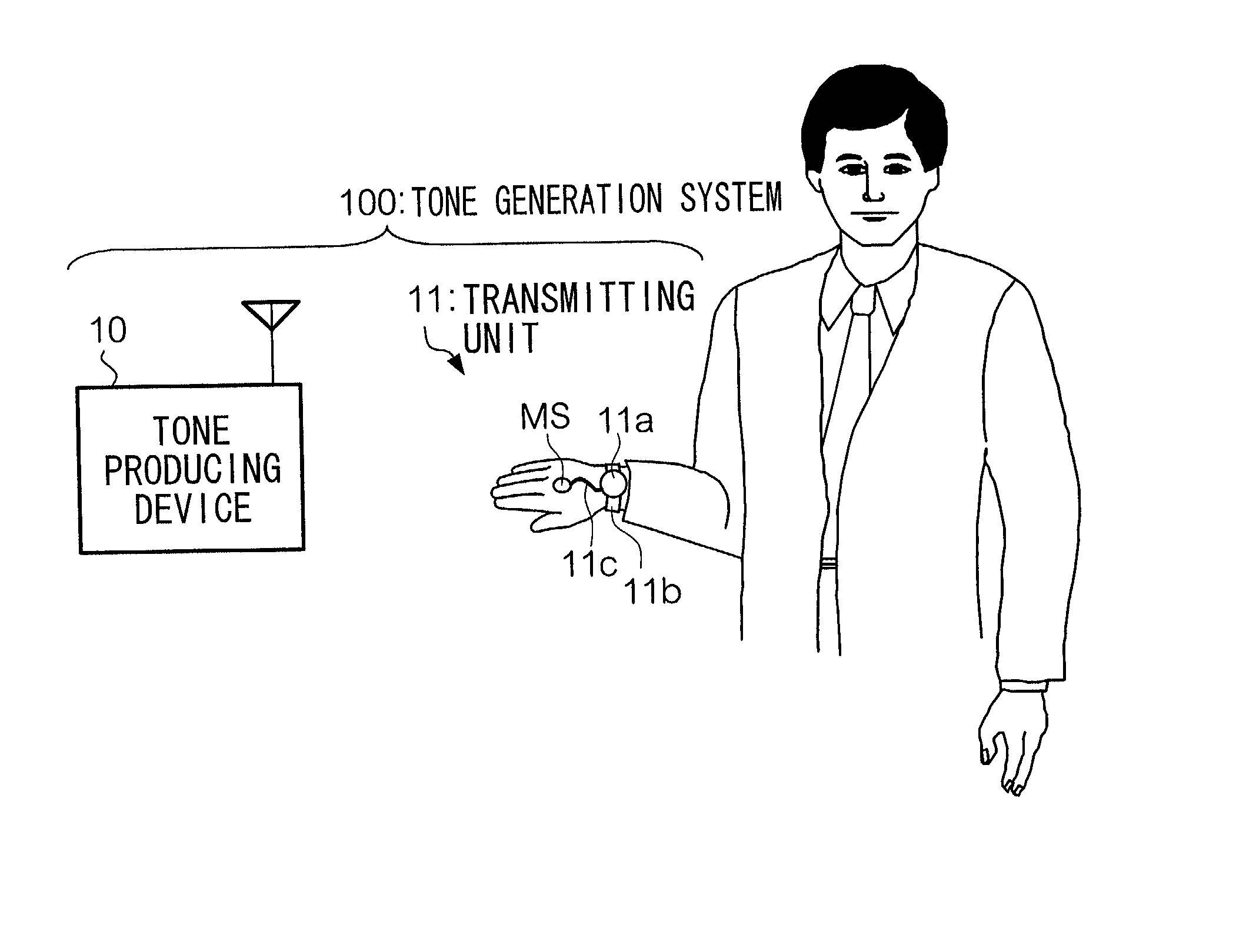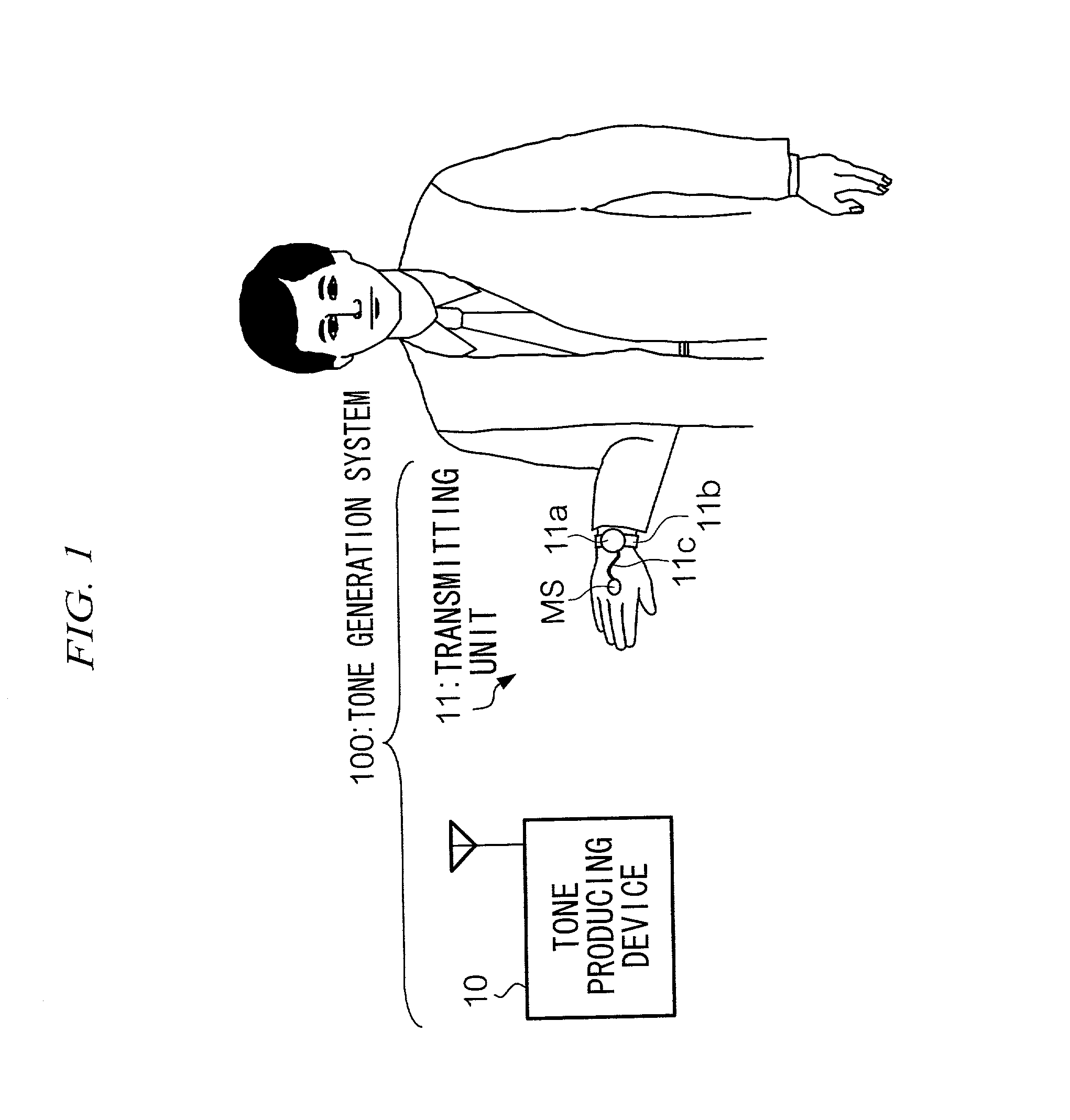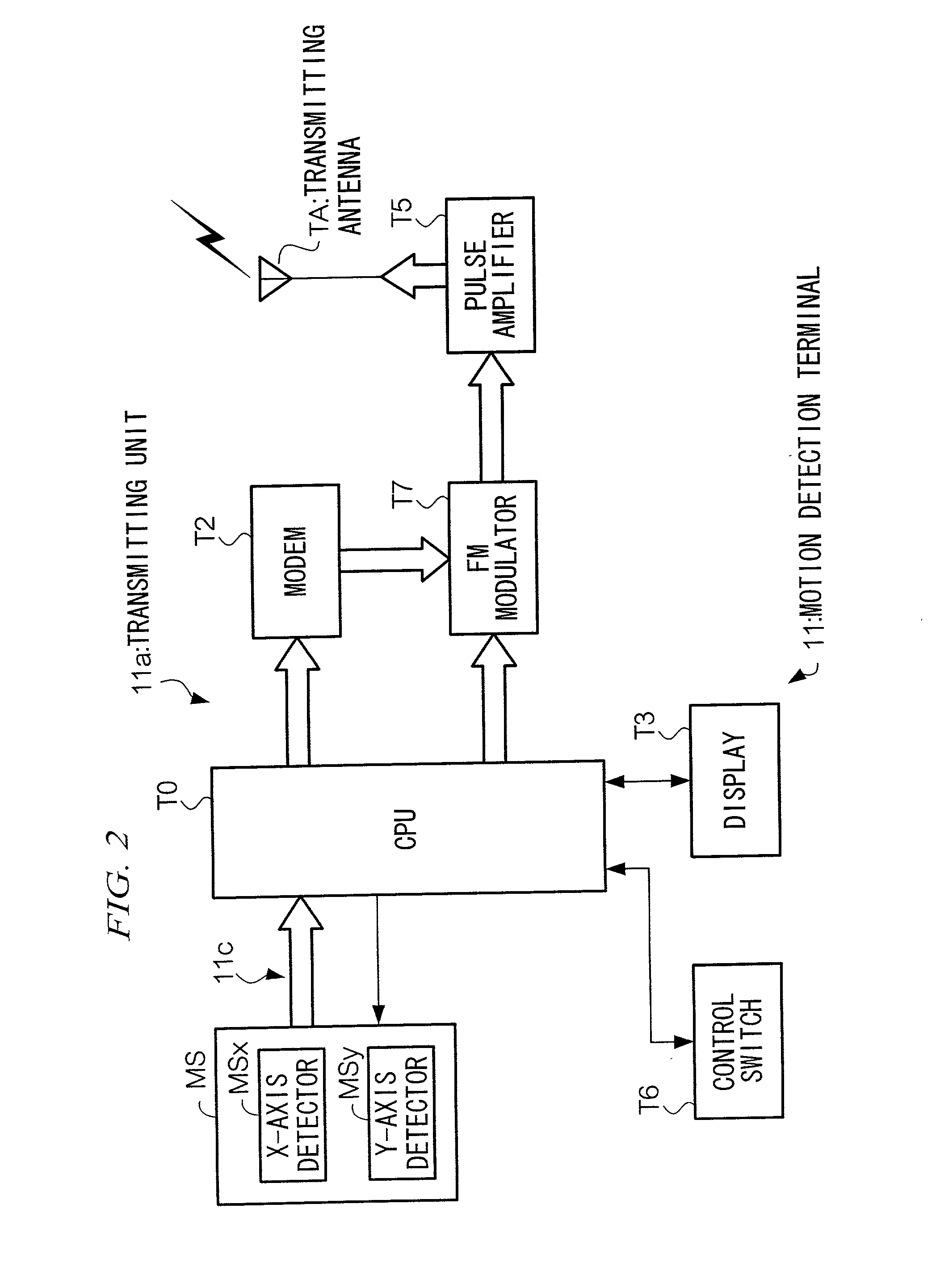Tone generation controlling system
- Summary
- Abstract
- Description
- Claims
- Application Information
AI Technical Summary
Benefits of technology
Problems solved by technology
Method used
Image
Examples
first embodiment
A. FIRST EMBODIMENT
A-1. Configuration
[0023] FIG. 1 is an external perspective view of a tone generation system. As shown, a tone generation system 100 has a tone producing device 10; and a motion detection terminal 11 to be attached to a user's hand. The Motion detection terminal 11 is composed of a sensor unit MS attached to the back of a user's hand; and a transmitting unit 1 la for transmitting to the Tone producing device 10, by radio, motion information detected by the sensor unit MS. Since The Transmitting unit 11a is not attached to a hand, a device to be attached to the back of a hand can be kept both compact and light, thereby enabling a user to execute hand movements with both agility and flexibility. In one example, the Transmitting unit 11a is attached to a user's wrist by means of a band 11b shown in FIG. 1. The Motion sensor MS is connected to the Transmitting unit 11a via a signal line 11c. A signal representing a hand motion detected by the Motion sensor MS is suppli...
modification 1
[0052] In the first embodiment the Motion sensor MS is attached to the back of a hand, to thereby detect torsional motion. As shown in FIG. 7, a rod-like motion detection terminal may be introduced, functioning as both the motion sensor MS and the Transmitting unit 11a. Specifically, a Motion detection terminal 211 shown in FIG. 7 has a cylindrical shape. The Motion detection terminal 211 is used in a predetermined manner that a user holds at both edges, as shown in FIG. 8.
[0053] As shown in FIG. 7, distortion gauges 212a and 212b are attached on the surface of the Motion detection terminal 211, to detect twisting of hands. Each gauge detects an amount of distortion of the surface of the Motion detection terminal 211 in an X-axis direction and a Y-axis direction respectively, which directions are orthogonal to each other. The Transmitting unit 11a is integrated in the Motion detection terminal 211, and information on distortion in X-axis and Y-axis directions, each detected by the D...
modification 2
[0055] In the first embodiment, a hand motion determines a pitch and timbre to be generated. However, it is also possible for a hand motion to govern a tempo, volume, and other parameters. In other words, tone attributes of a music composition can be controlled, such as tempo, volume, effect, and any other attribute parameters that are predetermined prior to reproduction.
[0056] Specifically, the Hard disk drive 33 stores MIDI data. Parameter determination table stores values of tempos instead of pitch or timbre; and corresponding values .theta.x and .theta.y, respectively. Tone producing device plays a piece of music represented by MIDI data. During the playback of the MIDI data, when a hand is in a horizontal position as shown in FIG. 6A the music is played at its normal tempo. When a user bends his or her wrist as shown in FIG. 6B, the music is played, for example, at a faster tempo. Needless to say, other parameters concerning volume and dynamics and adding effects can likewise b...
PUM
 Login to View More
Login to View More Abstract
Description
Claims
Application Information
 Login to View More
Login to View More - R&D
- Intellectual Property
- Life Sciences
- Materials
- Tech Scout
- Unparalleled Data Quality
- Higher Quality Content
- 60% Fewer Hallucinations
Browse by: Latest US Patents, China's latest patents, Technical Efficacy Thesaurus, Application Domain, Technology Topic, Popular Technical Reports.
© 2025 PatSnap. All rights reserved.Legal|Privacy policy|Modern Slavery Act Transparency Statement|Sitemap|About US| Contact US: help@patsnap.com



